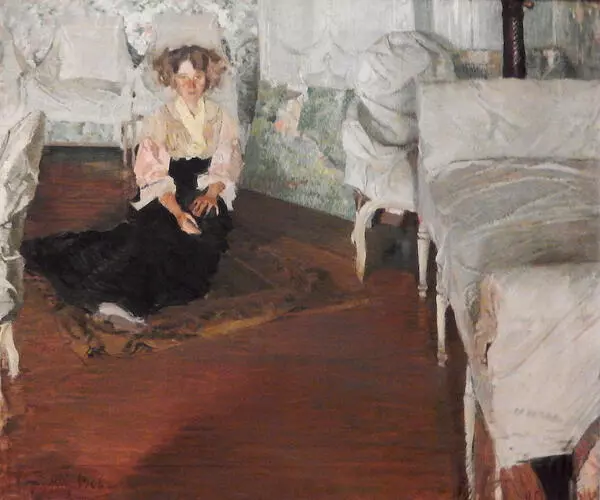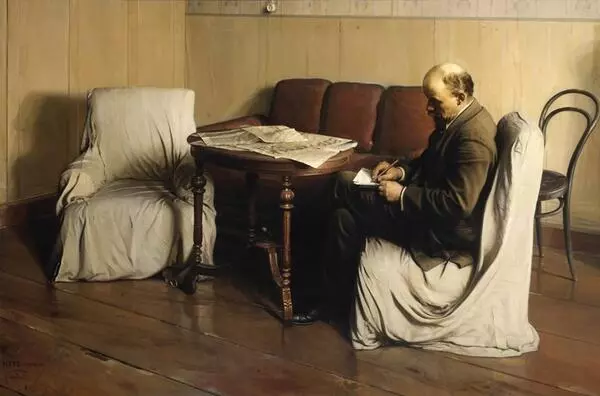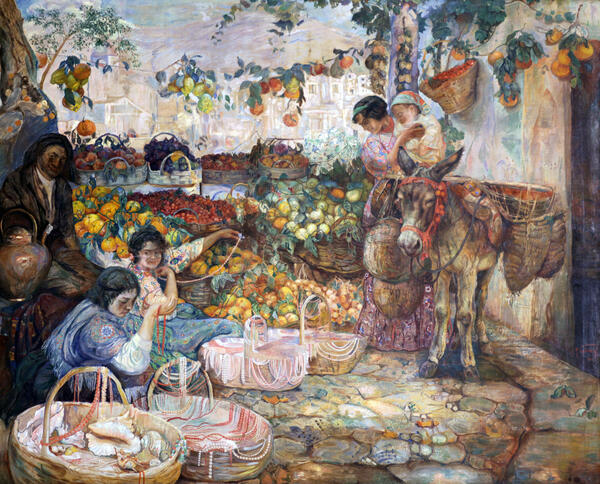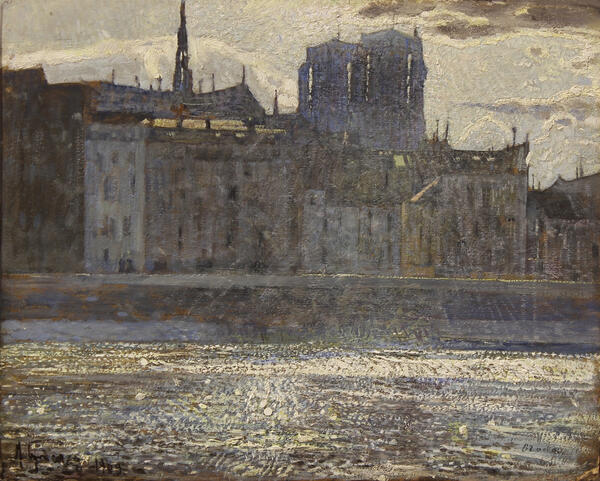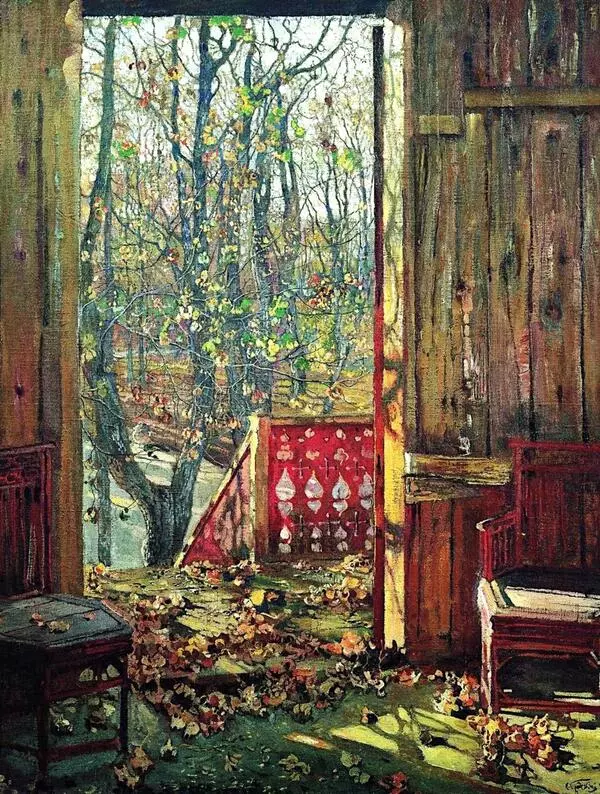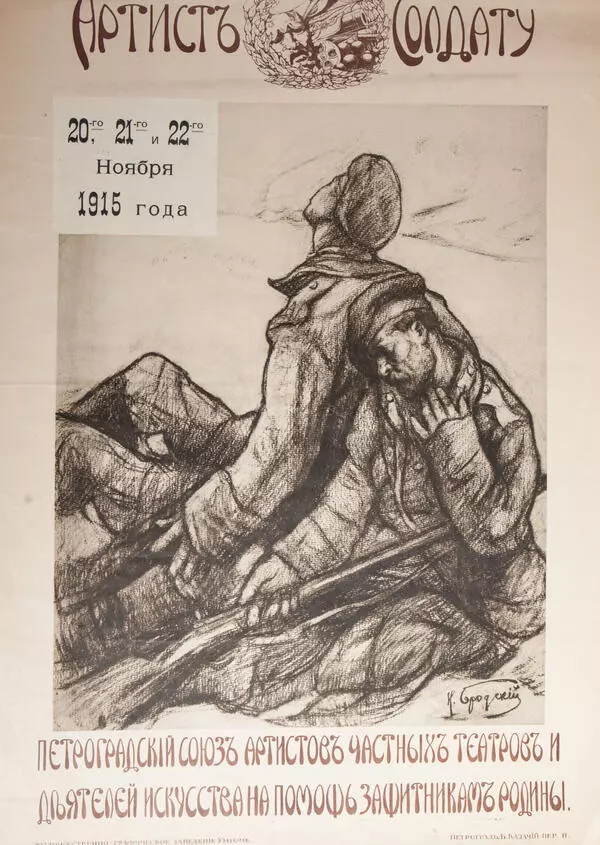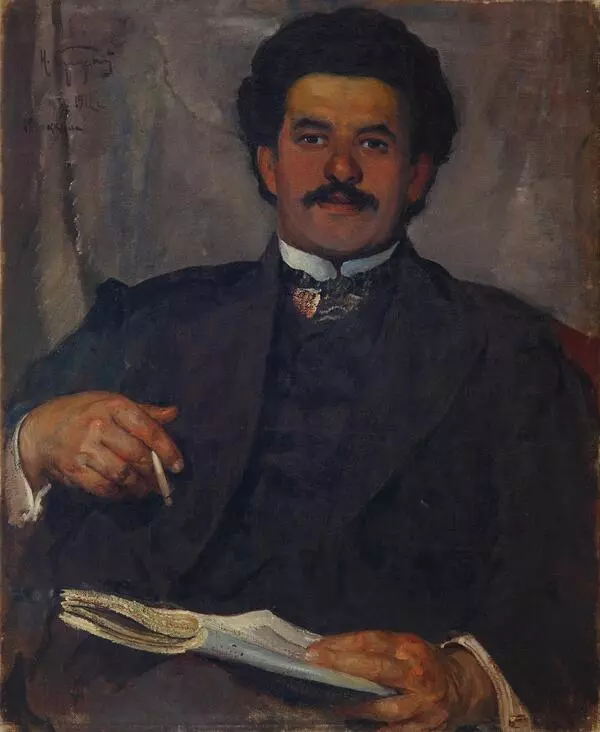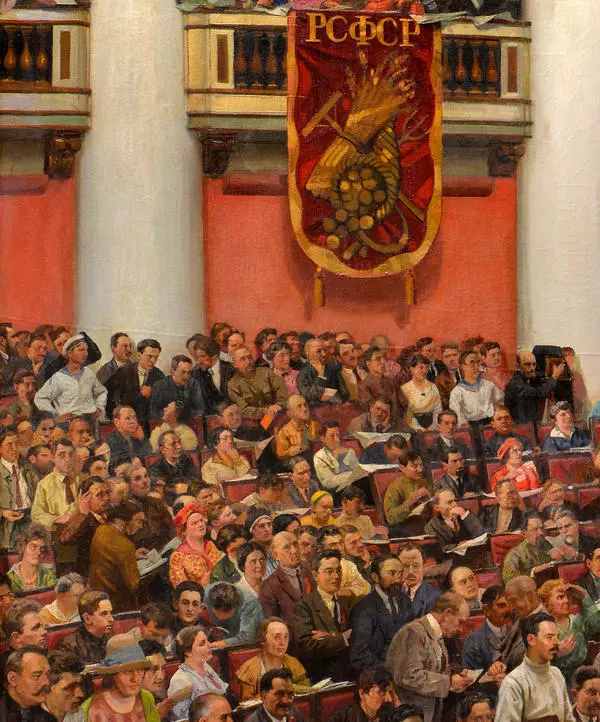Isaac Brodsky, painter, was born in 1883 into a Jewish family in a small village in what is now the Zaporozhye region of Ukraine.
The Village of Sofievka
Время создания
1902
Размер
89x134 cm
Техника
canvas, oil
Коллекция
4
Открыть в приложении#1
Isaak Brodsky
The Village of Sofievka
#22
#23
I was born in the small Bulgarian village of Sofievka, not far from Berdyansk in Taurida province. I’d say there were not any special childhood impressions, encouraging me to take up the fine arts, in a remote village and in all the little world that surrounded me…
Brodsky wrote about his homeland
#3
Brodsky was first educated at the Odessa Art School of the Society for the Encouragement of Fine Arts, and then he moved to St. Petersburg and entered the Higher School of Painting, Sculpture and Architecture at the Imperial Academy of Fine Arts. There he studied in the studio of Ilya Repin. Together with other students, Brodsky traveled to Europe and Asia Minor, and visited Capri, where he was staying with the writer Maxim Gorky.
When the artist returned to Russia, he began to paint a lot, mostly working on narrative paintings, portraits and landscapes. In depicting nature, Isaac Brodsky followed the ideas of symbolism, glorified Russian nature. In the 1910s, the artist created the works “Late Autumn” and “Winter”, which received a Gold medal at the International Art Exhibition in Munich.
Brodsky had painted “The Village of Sofievka” a little earlier. It is now part of the collection of the Shebekino Museum. The painting featured a simple and austere landscape — a warm day in late summer in the artist’s home village. Brodsky painted several wooden huts and barns under a thatched roof surrounded by the forest and a church with a green dome, which towers over the village. To the left in the foreground are some chickens, and a little farther to the side, there are some goats grazing.
The artist recalled that from a young age he loved to depict houses and animals, as well as to repeat whimsical patterns and ornaments — it helped him develop the ability to pay close attention to details and sharpen his technique. Brodsky made a fine sketch of the tree leaves, the round outlines of a wispy white cloud, and the beams of the huts.
Now his paintings are housed in many museums and private collections in Russia and abroad. Some of his works can be seen in the museum-apartment of Isaac Brodsky in St. Petersburg.
When the artist returned to Russia, he began to paint a lot, mostly working on narrative paintings, portraits and landscapes. In depicting nature, Isaac Brodsky followed the ideas of symbolism, glorified Russian nature. In the 1910s, the artist created the works “Late Autumn” and “Winter”, which received a Gold medal at the International Art Exhibition in Munich.
Brodsky had painted “The Village of Sofievka” a little earlier. It is now part of the collection of the Shebekino Museum. The painting featured a simple and austere landscape — a warm day in late summer in the artist’s home village. Brodsky painted several wooden huts and barns under a thatched roof surrounded by the forest and a church with a green dome, which towers over the village. To the left in the foreground are some chickens, and a little farther to the side, there are some goats grazing.
The artist recalled that from a young age he loved to depict houses and animals, as well as to repeat whimsical patterns and ornaments — it helped him develop the ability to pay close attention to details and sharpen his technique. Brodsky made a fine sketch of the tree leaves, the round outlines of a wispy white cloud, and the beams of the huts.
Now his paintings are housed in many museums and private collections in Russia and abroad. Some of his works can be seen in the museum-apartment of Isaac Brodsky in St. Petersburg.
#21
Ministry of Culture of the Russian Federation
читать дальшескрыть
00:00
00:00
1x
The Village of Sofievka
Время создания
1902
Размер
89x134 cm
Техника
canvas, oil
Коллекция
4
Открыть в приложении
Поделиться




